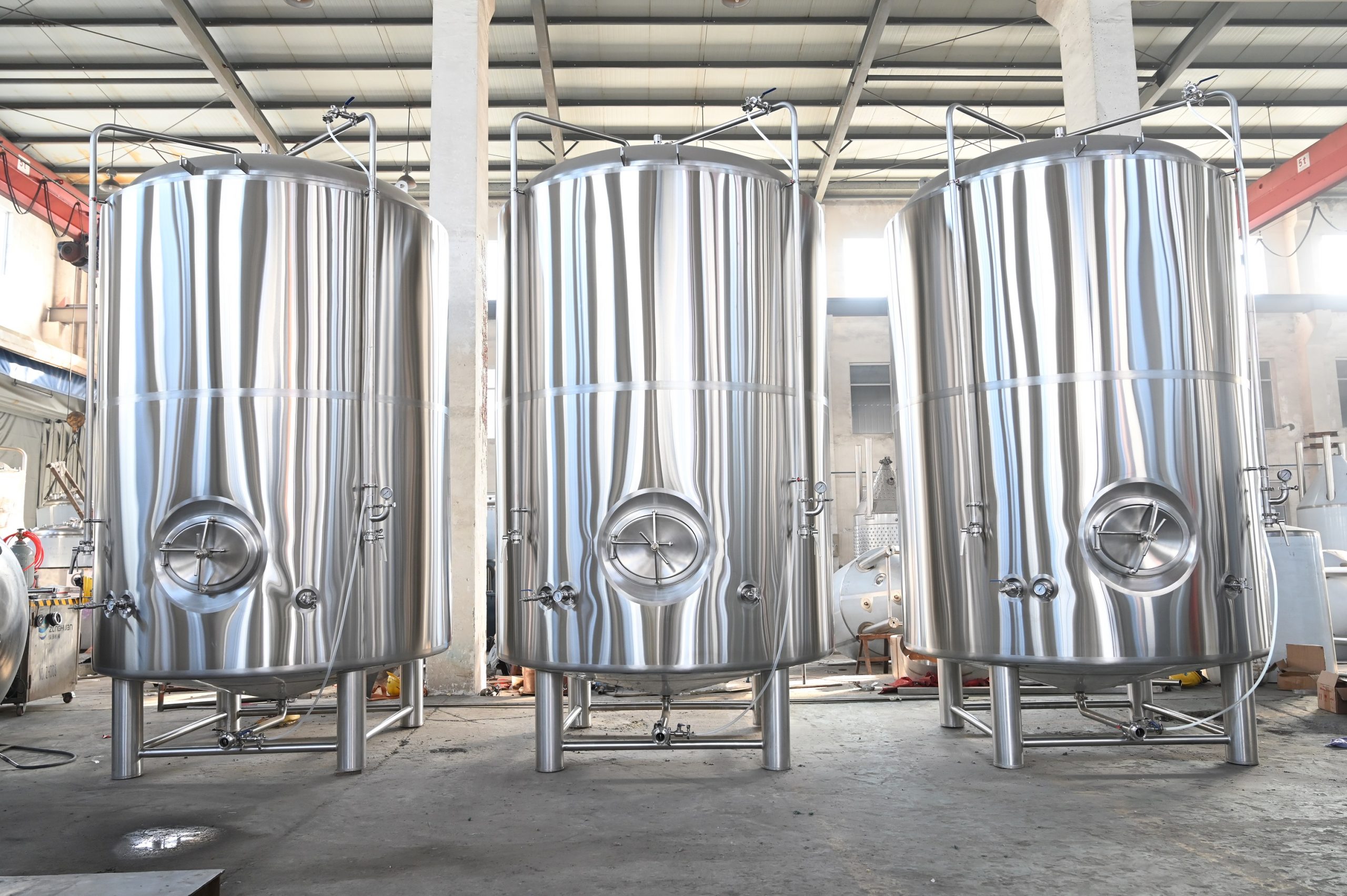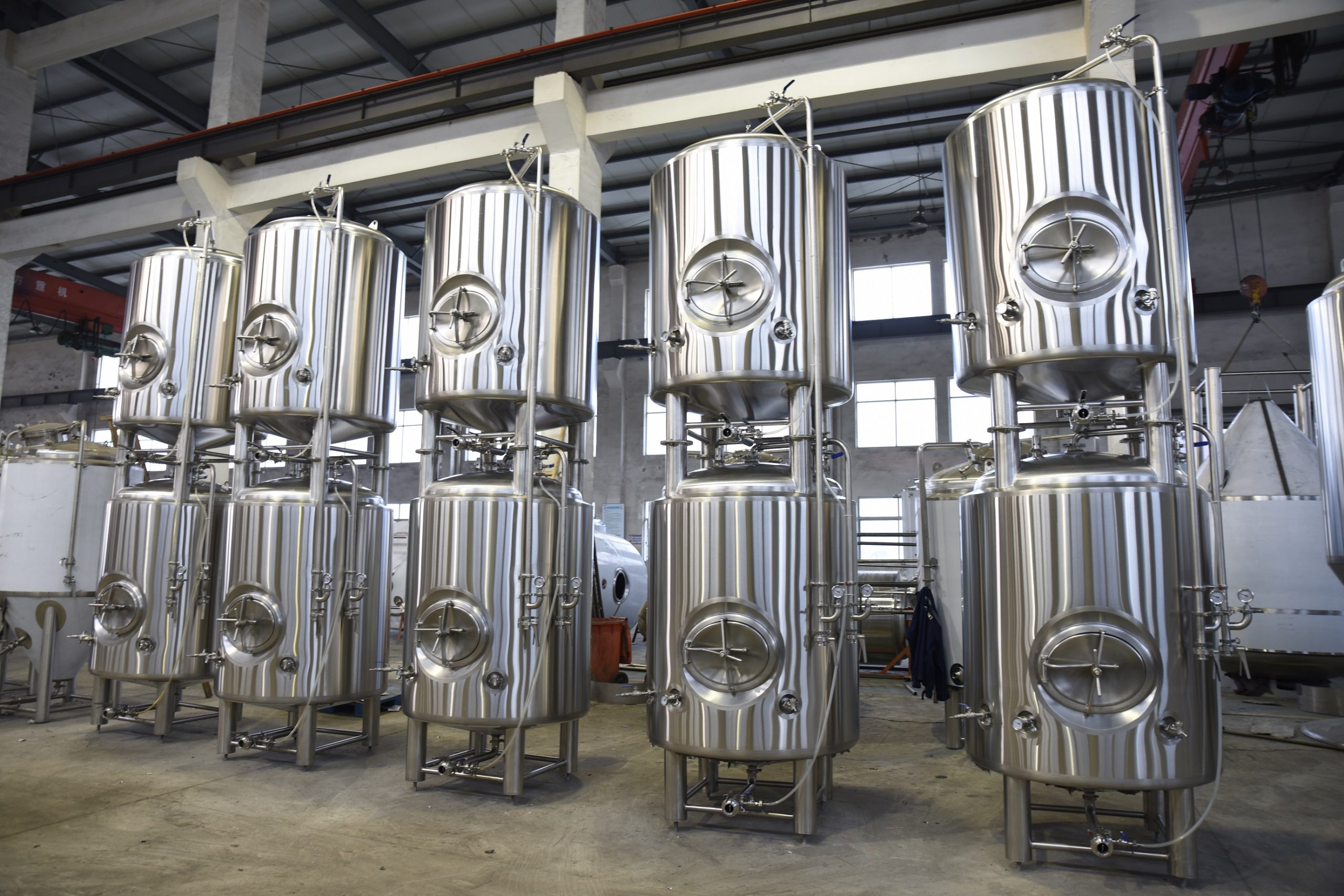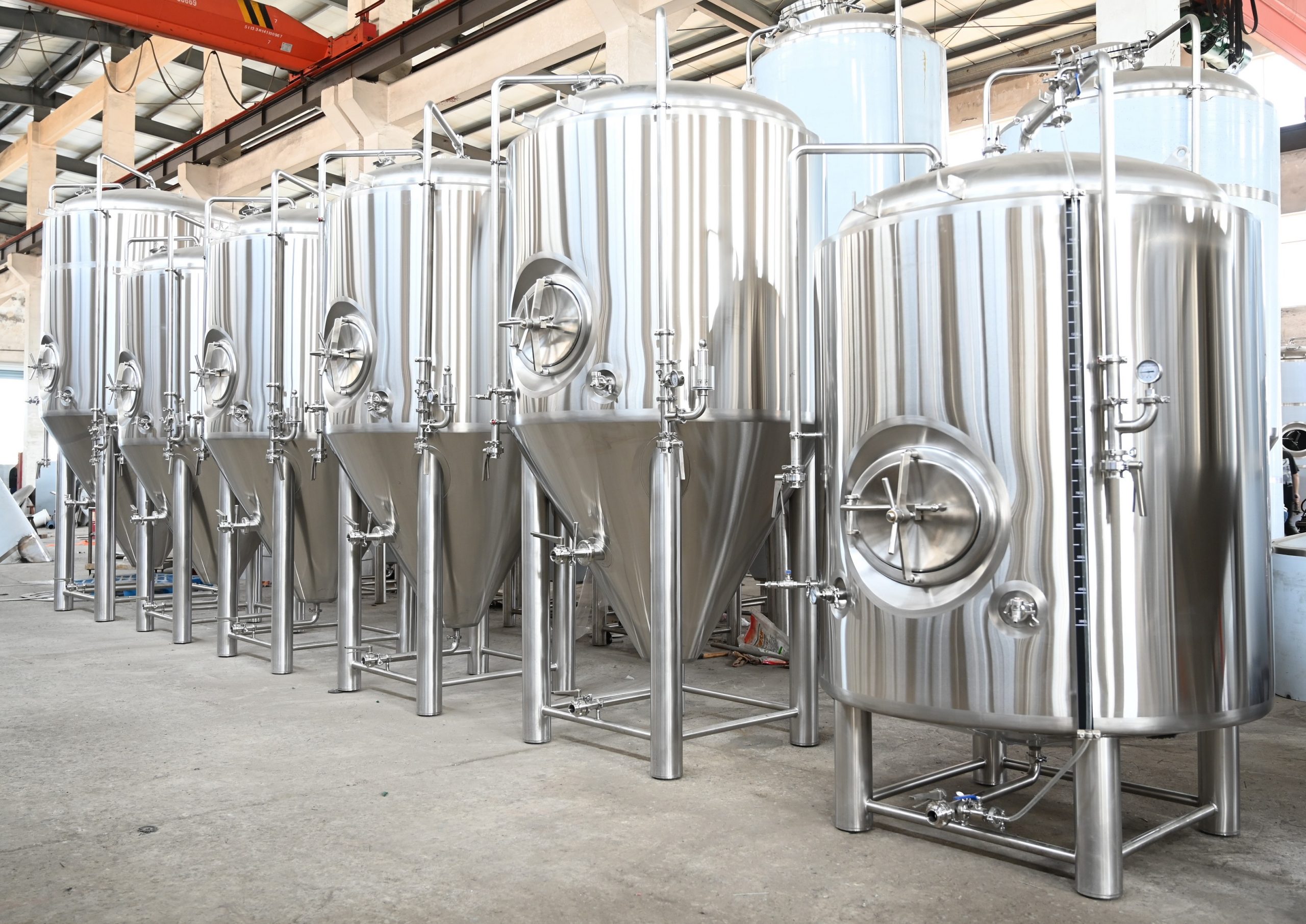
How To Get Carbonated Beer Out Of Brite Tank Without Foaming?

Getting carbonated beer out of a brite tank without excessive foaming requires careful handling and the right equipment. Here’s a step-by-step guide to minimize foaming when transferring beer from the brite tank:
1.Check Temperature and Carbonation Levels:
Ensure that the beer in the brite tank is at the appropriate temperature for serving or packaging. The beer’s temperature should match the temperature at which it was carbonated to maintain carbonation levels.
Verify that the beer is properly carbonated to your desired level.
2.Prepare Your Packaging Equipment:
Ensure that all your packaging equipment (kegs, bottles, cans, etc.) is clean and sanitized to prevent contamination.
Prepare any necessary connectors, hoses, and couplers for transferring the beer.
3.Reduce Agitation:
Minimize any unnecessary agitation of the beer in the brite tank. Agitation can release CO2 and create foam. Avoid bumping or shaking the tank.
4.Use Appropriate Transferring Equipment:
Consider using a specialized beer transfer hose or racking cane that is designed to reduce foaming. These tools often have features like a gentle flow and a smooth flow path to minimize turbulence.
5.Use a Slow and Controlled Flow:
When transferring the beer, do so slowly and with a controlled flow rate. Avoid sudden changes in flow that can agitate the beer and cause foaming.
Ensure that the tubing leading from the brite tank to your packaging vessel is as straight and kink-free as possible to maintain a smooth flow.
6.Manage Pressure:
If your brite tank is pressurized, make sure the pressure inside the tank is stable and matches the pressure of the packaging vessel (keg, bottle, can).
Use a low-pressure release valve or gentle pressure relief to control the flow of beer.
7.Fill from the Bottom:
When filling kegs or bottles, try to fill from the bottom up. This minimizes splashing and reduces the risk of foaming. Counter-pressure filling systems are particularly effective for this purpose.
8.Purge Packaging Vessels:
Before filling kegs, bottles, or cans, purge them with CO2 to eliminate oxygen and create a protective atmosphere. This helps reduce foaming during the filling process.
9.Monitor and Adjust:
Continuously monitor the filling process. If you notice foaming or excessive bubbles, slow down the flow or adjust the pressure as needed.
Have someone at the packaging end to control the filling and stop it if necessary.
10.Quality Control:
After packaging, inspect the filled vessels for any signs of foam or excessive carbonation. Properly sealed kegs or bottles should maintain their carbonation levels.

By following these steps and paying attention to details, you can minimize foaming when transferring carbonated beer from a brite tank, ensuring that your final product remains consistent in quality and carbonation level.



















